
Introduction
Welcome to the ultimate guide to yoga, where we delve into the ancient practice that has been providing countless individuals with a path to wellness and self-discovery. Yoga, an age-old discipline originating in ancient India, offers a holistic approach to achieving harmony between the mind, body, and spirit. In this comprehensive article, we will explore the various aspects of yoga, its benefits, different styles, and how to incorporate it into your daily life. So roll out your mat, take a deep breath, and let\’s embark on this transformative journey together!
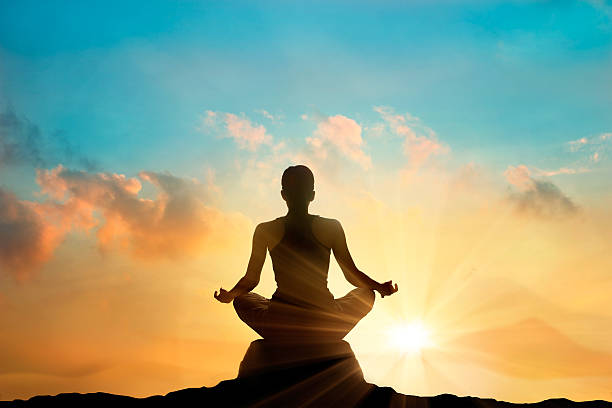
Table of Contents
- What is Yoga?
- Yoga: A Path to Wellness
- The Physical Benefits of Yoga
- The Mental Benefits of Yoga
- Exploring Different Styles of Yoga
- How to Start a Yoga Practice
- Common Yoga Poses for Beginners
- Yoga and Meditation: A Powerful Combination
- Yoga for Stress Relief
- Yoga for Weight Loss
- Yoga for Flexibility
- Yoga for Strength
- Yoga for Balance
- Yoga for Back Pain
- Yoga for Pregnancy
- Yoga for Seniors
- Yoga for Kids
- Yoga Retreats: A Journey Within
- Yoga and Ayurveda: A Perfect Union
- Frequently Asked Questions
- Conclusion
What is Yoga?
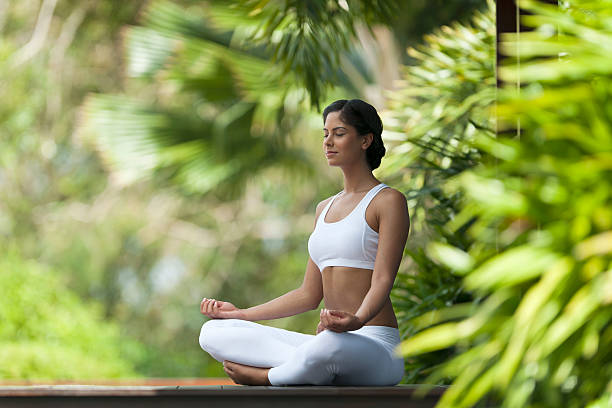
Yoga is an ancient discipline that encompasses physical, mental, and spiritual practices aimed at achieving harmony and balance within oneself. The word \”yoga\” is derived from the Sanskrit word \”yuj,\” which means to unite or join. It is a practice that combines physical postures, breath control, meditation, and ethical principles to promote overall well-being. The ultimate goal of yoga is to attain a state of self-realization and inner peace.
Yoga: A Path to Wellness
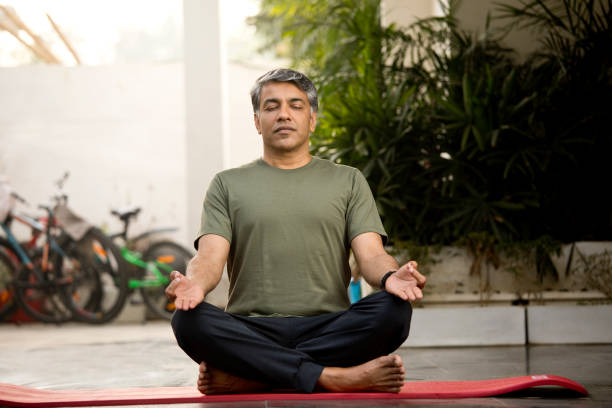
Yoga is not just a physical exercise but a holistic approach to wellness. It offers a pathway to cultivate self-awareness, reduce stress, enhance flexibility, build strength, and improve mental clarity. By practicing yoga regularly, individuals can experience profound transformations in their physical, mental, and emotional states. It serves as a powerful tool to navigate the challenges of modern life and discover a deeper sense of purpose and fulfillment.
The Physical Benefits of Yoga
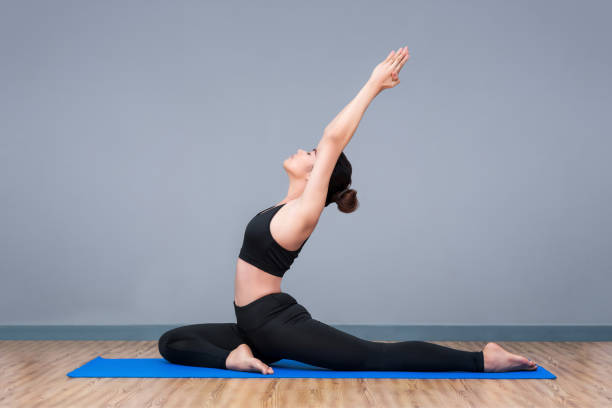
Regular practice of yoga offers numerous physical benefits that contribute to overall health and well-being. Some of the key advantages include:
- Improved flexibility: Yoga asanas (postures) gently stretch and lengthen the muscles, increasing flexibility and range of motion.
- Enhanced strength: Many yoga poses require engaging and stabilizing various muscle groups, leading to increased strength and toning.
- Better posture: Yoga helps correct imbalances in the body, promoting proper alignment and posture.
- Increased energy and vitality: The combination of movement, breath control, and relaxation in yoga boosts energy levels and revitalizes the body.
- Improved cardiovascular health: Certain dynamic yoga styles, such as Vinyasa or Power Yoga, provide a cardiovascular workout, promoting heart health.
- Weight management: Yoga helps maintain a healthy weight by increasing metabolism and promoting mindful eating habits.
The Mental Benefits of Yoga

In addition to the physical benefits, yoga offers a wealth of mental and emotional advantages. Here are some of the ways in which yoga positively impacts mental well-being:
- Stress reduction: The mindful and meditative aspects of yoga help calm the mind, reduce stress, and promote relaxation.
- Mental clarity and focus: Yoga practices, such as pranayama (breath control) and meditation, enhance mental clarity, concentration, and focus.
- Emotional balance: Regular yoga practice cultivates emotional intelligence, promotes self-awareness, and helps manage emotions effectively.
- Better sleep: Yoga can alleviate sleep-related issues by calming the nervous system and promoting relaxation.
- Anxiety and depression management: Research suggests that yoga can be an effective complementary therapy for managing anxiety and depression.
Exploring Different Styles of Yoga
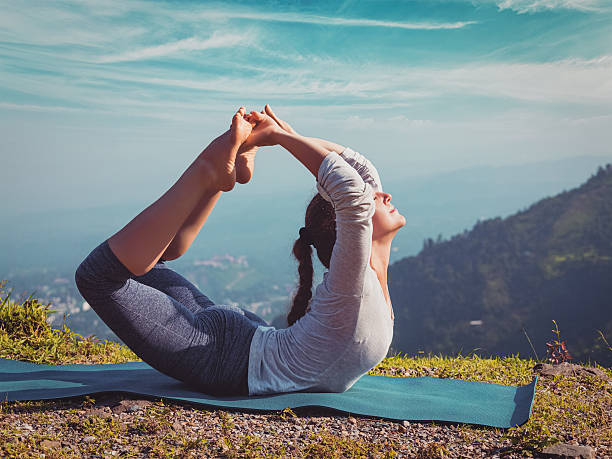
Yoga encompasses a wide range of styles, each offering unique approaches and benefits. Let\’s explore some of the popular yoga styles:
- Hatha Yoga: Hatha yoga is a gentle and foundational style that focuses on the physical postures (asanas) and breath control (pranayama).
- Vinyasa Yoga: Vinyasa yoga is a dynamic and fluid style that synchronizes movement with breath, creating a flowing sequence of poses.
- Ashtanga Yoga: Ashtanga yoga follows a specific sequence of poses and is physically demanding, promoting strength, flexibility, and endurance.
- Iyengar Yoga: Iyengar yoga emphasizes alignment and uses props like blocks, straps, and blankets to assist in attaining precise poses.
- Bikram Yoga: Bikram yoga, also known as hot yoga, is practiced in a heated room to enhance flexibility and detoxification.
- Kundalini Yoga: Kundalini yoga combines dynamic movements, breathwork,
How to Start a Yoga Practice

If you\’re new to yoga and looking to start a practice, here are some helpful tips to get you started:
- Find a suitable space: Choose a quiet and clutter-free area where you can comfortably roll out your yoga mat. It can be a spare room, a corner of your living room, or even outdoors if weather permits.
- Gather the necessary equipment: You\’ll need a yoga mat that provides adequate support and grip. Additionally, props like blocks, straps, and blankets can be useful for modifications and adjustments.
- Dress comfortably: Wear clothing that allows you to move freely and doesn\’t restrict your range of motion. Opt for breathable fabrics that absorb sweat.
- Start with beginner-friendly classes: Look for beginner-level yoga classes either at local studios or online platforms. These classes are designed to introduce you to the fundamental poses and principles of yoga in a safe and accessible manner.
- Practice mindfulness: Yoga is not just about the physical postures; it\’s also about cultivating mindfulness and awareness. Focus on your breath and stay present in the moment during your practice.
- Set realistic goals: Be patient with yourself and set realistic goals. Rome wasn\’t built in a day, and the same goes for yoga. Start with shorter sessions and gradually increase the duration and intensity as you progress.
- Listen to your body: Pay attention to how your body feels during the practice. If a pose doesn\’t feel right or causes pain, modify or skip it. Yoga should be a gentle and nurturing practice, not a competition.
- Consistency is key: Establish a regular practice by committing to a specific time and duration. Consistency will help you reap the maximum benefits of yoga.
- Seek guidance from a qualified teacher: If possible, seek guidance from a certified yoga teacher who can provide personalized instruction and correct alignment to prevent injuries.
- Enjoy the journey: Remember that yoga is a journey of self-discovery and self-care. Embrace the process, enjoy the practice, and celebrate the small victories along the way.
Common Yoga Poses for Beginners

Here are some common yoga poses that are suitable for beginners:
- Mountain Pose (Tadasana): Stand tall with feet hip-width apart, shoulders relaxed, and palms facing forward. This pose improves posture and increases body awareness.
- Downward-Facing Dog (Adho Mukha Svanasana): Start on all fours, then lift your hips up and back, forming an inverted V shape. This pose stretches the entire body, strengthens the arms and legs, and calms the mind.
- Child\’s Pose (Balasana): Kneel on the floor, sit back on your heels, and lower your forehead to the mat. Extend your arms forward or rest them alongside your body. This pose promotes relaxation and releases tension in the back.
- Warrior I (Virabhadrasana I): Step one foot forward into a lunge position, with the back foot angled slightly outward. Raise your arms overhead, keeping your front knee bent. This pose builds strength and stability while opening the chest and hips.
- Tree Pose (Vrikshasana): Stand tall and shift your weight onto one leg. Place the sole of the other foot on the inner thigh, calf, or ankle. Find your balance and bring your hands to your heart center. This pose improves balance and concentration.
- Bridge Pose (Setu Bandhasana): Lie on your back with knees bent and feet flat on the mat. Press your feet into the floor, lift your hips, and interlace your hands underneath your body. This pose strengthens the back, glutes, and hamstrings.
Remember to practice these poses with awareness and listen to your body\’s limitations. If you experience any pain or discomfort, ease out of the pose and consult a qualified yoga teacher.
Yoga and Meditation: A Powerful Combination
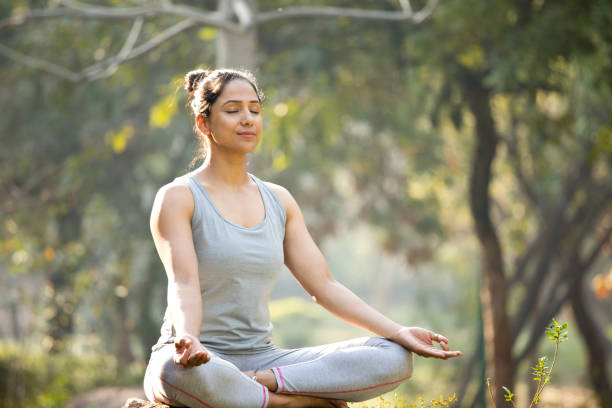
Yoga and meditation are like two sides of the same coin, complementing each other beautifully. While yoga primarily focuses on the physical aspect, meditation dives deep into the realms of the mind and inner self. Together, they create a harmonious balance between the body and mind.
Meditation is the practice of training the mind to achieve a state of clarity, focus, and inner calm. It involves sitting in a comfortable position, closing the eyes, and directing the attention inward. By practicing meditation regularly, one can experience a multitude of benefits, including reduced stress, improved emotional well-being, enhanced self-awareness, and increased mental clarity.
When combined with yoga, meditation can deepen the mind-body connection and enhance the overall yoga experience. It allows practitioners to be fully present in the moment, cultivating mindfulness and expanding their consciousness. Incorporating meditation into your yoga practice can be as simple as taking a few minutes to sit quietly and observe your breath before or after performing yoga asanas.
Yoga for Stress Relief

In our fast-paced and demanding lives, stress has become a common companion. Yoga offers a natural and effective way to alleviate stress and restore balance to the body and mind. Here are some ways yoga can help relieve stress:
- Deep breathing: The breath is a powerful tool for calming the nervous system. Practicing deep, conscious breathing techniques like diaphragmatic breathing or alternate nostril breathing can instantly induce a state of relaxation.
- Gentle stretches and restorative poses: Gentle yoga poses and restorative poses help release tension stored in the muscles and activate the body\’s relaxation response. Poses like Child\’s Pose, Legs-Up-The-Wall Pose, and Corpse Pose are particularly beneficial for stress relief.
- Mindfulness and meditation: Yoga encourages mindfulness and present-moment awareness. By bringing attention to the breath, sensations, and thoughts, we can train the mind to let go of stress-inducing thoughts and cultivate a state of calm.
- Stress-reducing sequences: Certain yoga sequences, such as Yin Yoga or Yoga Nidra, are specifically designed to target stress and promote deep relaxation. These sequences involve holding poses for an extended period or entering a state of guided meditation, allowing the body and mind to unwind.
- Positive affirmations and visualization: Incorporating positive affirmations and visualization techniques during yoga practice can help shift the focus from stress to a more positive and empowering mindset.
By incorporating stress-relieving yoga practices into your routine, you can create a sanctuary of peace amidst the chaos, allowing yourself to recharge and find inner balance.
Yoga for Weight Loss
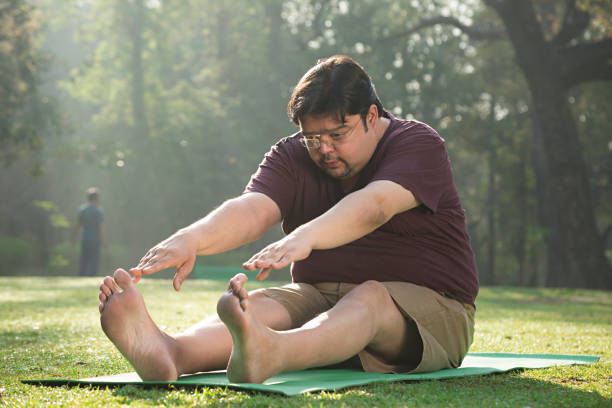
Yoga, when practiced consistently and combined with a balanced diet, can be a valuable tool for weight loss. While it may not burn as many calories as high-intensity cardio exercises, yoga offers several benefits that contribute to healthy weight management. Here\’s how yoga supports weight loss:
- Increased awareness of the body: Yoga cultivates mindfulness and body awareness, helping you develop a deeper connection with your body\’s signals of hunger and fullness. This awareness can prevent overeating and promote healthier food choices.
- Improved metabolism: Certain yoga styles, such as Power Yoga or Vinyasa Yoga, are more physically demanding and can increase heart rate, thereby boosting metabolism and calorie burn.
- Muscle toning: Yoga poses require strength and stability, which help build lean muscle mass. Increased muscle mass can contribute to a higher resting metabolic rate, leading to
burning more calories throughout the day.
- Stress reduction: Chronic stress can lead to weight gain and hinder weight loss efforts. Yoga\’s calming and stress-reducing effects help regulate the production of stress hormones like cortisol, which can contribute to weight loss.
- Increased energy levels: Regular yoga practice can increase energy levels, making you more motivated and inclined to engage in physical activities that support weight loss.
- Improved digestion: Certain yoga poses, like twists and forward bends, stimulate the digestive system, promoting better digestion and absorption of nutrients.
It\’s important to note that yoga alone may not lead to significant weight loss. It should be combined with a well-rounded fitness routine that includes cardiovascular exercise, strength training, and a balanced diet for optimal results.
Yoga for Flexibility

Flexibility is a key component of physical fitness that allows for greater range of motion and prevents injuries. Yoga is renowned for its ability to improve flexibility gradually and safely. Here\’s how yoga helps enhance flexibility:
- Stretching of muscles and connective tissues: Yoga poses involve gentle stretching of muscles and connective tissues, helping to lengthen and release tension. Over time, consistent practice can lead to improved flexibility.
- Targeted stretching of specific muscle groups: Different yoga poses target specific areas of the body, such as hamstrings, hips, shoulders, and spine. Regular practice of these poses can gradually increase flexibility in these areas.
- Focus on breath and relaxation: Yoga encourages relaxed breathing and mental focus while holding poses. This approach allows the muscles to release tension and facilitates deeper stretching.
- Progression and modifications: Yoga offers a range of poses suitable for all levels of flexibility. Beginners can start with simpler variations and gradually progress to more challenging poses as flexibility improves.
- Dynamic movements: Certain styles of yoga, like Vinyasa or Flow Yoga, involve fluid and continuous movements that gently stretch and mobilize the body, promoting flexibility.
Remember, flexibility is a gradual process that requires patience and consistency. Avoid pushing yourself too hard or forcing your body into positions that cause pain. Listen to your body\’s limits and honor your unique range of motion.
Yoga for Strength
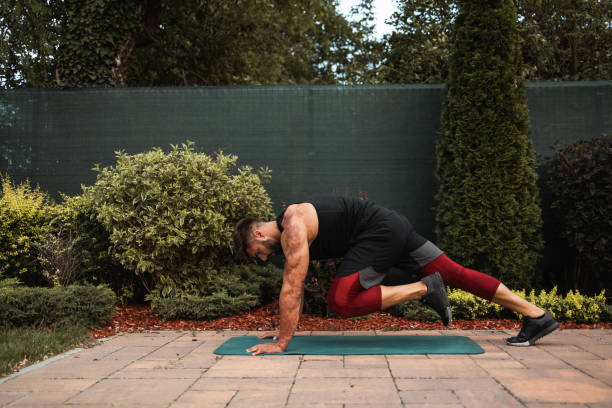
Contrary to popular belief, yoga is not only about flexibility but also an effective practice for building strength. While yoga doesn\’t focus on heavy weights or resistance training, it utilizes bodyweight exercises and holds that engage multiple muscle groups. Here\’s how yoga helps develop strength:
- Holding yoga poses: Many yoga poses require holding a position for an extended period, which builds strength and endurance. Poses like Plank, Warrior poses, and Crow pose engage the muscles of the core, arms, legs, and back.
- Balancing poses: Balancing poses, such as Tree pose or Warrior III, challenge stability and strengthen the muscles of the legs, core, and ankles.
- Challenging transitions: Flowing through yoga sequences or transitioning between poses requires controlled movements and engages the muscles dynamically, building functional strength.
- Core engagement: Yoga poses often involve activating and stabilizing the core muscles, leading to improved core strength and stability.
- Inversions: Inverted poses like Headstand or Handstand build upper body and core strength, as well as enhance balance and body awareness.
While yoga alone may not lead to the same level of strength gains as traditional strength training, it can be a valuable addition to a well-rounded fitness routine. Combining yoga with resistance training can offer a comprehensive approach to building strength, flexibility, and overall fitness.
Yoga for Balance
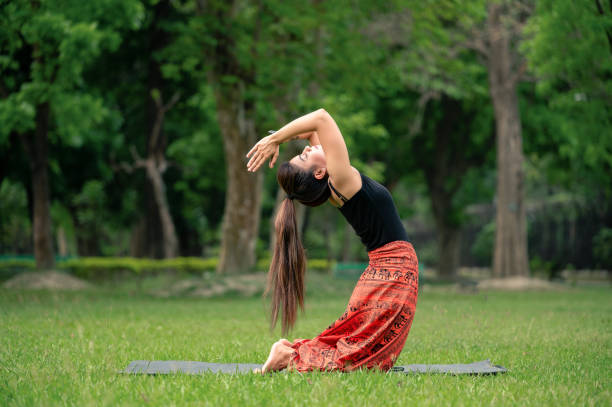
Balance is a vital aspect of physical fitness, contributing to stability, coordination, and injury prevention. Yoga offers a range of poses and practices that improve balance skills. Here\’s how yoga enhances balance:
- Standing poses: Yoga includes various standing poses that require balance and stability. Poses like Tree pose, Warrior III, and Eagle pose challenge the body\’s equilibrium, improving balance over time.
- One-legged poses: Balancing on one leg, as in poses like Half Moon or Dancer\’s pose, strengthens the muscles responsible for maintaining balance and improves proprioception.
- Core engagement: A strong core is essential for maintaining balance. Many yoga poses incorporate core engagement, leading to better stability and balance.
- Mind-body connection: Yoga cultivates mindfulness and body awareness, allowing practitioners to develop a deep connection with their physical sensations and subtle shifts in balance.
- Proprioception and spatial awareness: Yoga poses often involve proprioceptive cues, which are cues that help the body sense its position in space. This enhances spatial awareness and contributes to better balance.
By incorporating balance-focused yoga poses into your practice, you can improve stability, coordination, and body awareness, both on and off the mat.
Yoga for Back Pain

Back pain is a common ailment that affects millions of people worldwide. Yoga can be a valuable tool for managing and alleviating back pain. Here\’s how yoga can help:
- Strengthening the core and back muscles: Yoga poses like Plank, Locust pose, and Bridge pose strengthen the core muscles and the muscles along the spine, providing support and stability.
- Improving posture: Poor posture is often a contributing factor to back pain. Yoga promotes proper alignment and awareness of posture, helping to alleviate strain on the back.
- Stretching and releasing tension: Gentle stretching and specific yoga poses can help release tension in the back, hips, and hamstrings, which can contribute to back pain. Poses like Cat-Cow, Child\’s Pose, and Supine Twist are particularly beneficial.
- Spinal mobility: Yoga incorporates movements that gently mobilize the spine, improving flexibility and relieving stiffness. Poses like Seated Spinal Twist and Cobra pose are helpful for spinal mobility.
- Relaxation and stress reduction: Stress and tension can exacerbate back pain. Yoga\’s relaxation techniques, including deep breathing and relaxation poses, help calm the nervous system, reducing stress and promoting pain relief.
While yoga can provide relief for many individuals with back pain, it\’s important to consult with a healthcare professional before starting a yoga practice if you have severe or chronic back pain. Additionally, be mindful of your body\’s limitations and avoid poses that aggravate your pain.
Yoga for Pregnancy

Pregnancy is a transformative and precious time in a woman\’s life. Yoga can be a safe and beneficial practice during pregnancy, promoting physical and emotional well-being. Here\’s how yoga can support pregnant women:
- Gentle exercise: Yoga provides a gentle and low-impact form of exercise during pregnancy. It helps maintain cardiovascular health, strengthens muscles, and improves flexibility.
- Pelvic floor strength: Certain yoga poses, like Kegels and modified Squats, help strengthen the pelvic floor muscles, which can aid in childbirth and prevent complications like urinary incontinence.
- Alleviating common discomforts: Yoga poses and stretches can relieve common discomforts experienced during pregnancy, such as back pain, sciatica, and tightness in the hips.
- Stress reduction: Pregnancy can bring about heightened stress and anxiety. Yoga\’s relaxation techniques, including deep breathing and meditation, can help reduce stress, promote emotional well-being, and establish a connection with the growing baby.
- Preparation for labor: Some yoga practices, such as prenatal yoga classes or specific poses like Squatting and Cat-Cow, focus on preparing the body for labor and delivery, including
breathing techniques and pelvic opening exercises.
It\’s crucial to consult with your healthcare provider before starting or continuing a yoga practice during pregnancy. Certain poses and movements may need to be modified or avoided, depending on your individual circumstances. A qualified prenatal yoga instructor can guide you through a safe and tailored practice that supports your pregnancy journey.
Yoga for Seniors
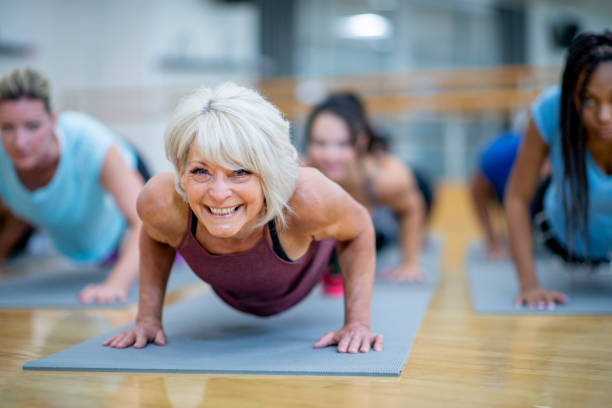
Yoga is a gentle and accessible practice that can be beneficial for seniors, helping them maintain mobility, flexibility, and overall well-being. Here\’s how yoga can benefit seniors:
- Gentle stretching: Yoga poses and gentle stretches help seniors maintain flexibility and prevent stiffness in the joints and muscles.
- Improving balance and stability: Many yoga poses focus on balance and stability, helping seniors improve their overall balance and reduce the risk of falls.
- Strength building: Yoga poses that engage the muscles help seniors build strength, supporting bone health and overall physical function.
- Relaxation and stress reduction: Yoga\’s relaxation techniques, including deep breathing and meditation, can help seniors manage stress, enhance mental well-being, and promote better sleep.
- Mind-body connection: Yoga cultivates mindfulness and body awareness, allowing seniors to connect with their bodies and listen to their needs.
It\’s essential for seniors to practice yoga under the guidance of a qualified instructor who can provide modifications and ensure safety. Seniors with specific health concerns or limitations should consult with their healthcare provider before starting a yoga practice.
Yoga for Kids
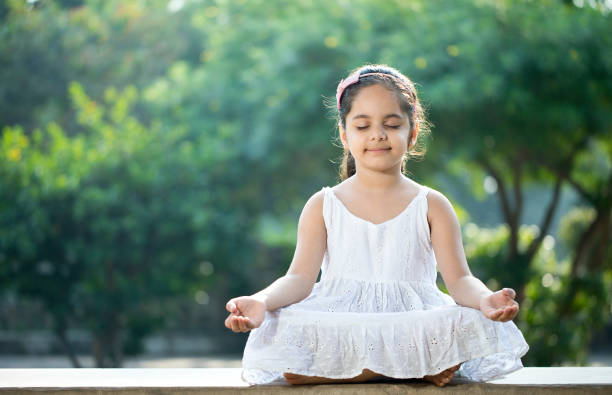
Yoga is not limited to adults; it can also benefit children in numerous ways. Yoga for kids offers a playful and engaging way to enhance physical health, promote emotional well-being, and develop mindfulness skills. Here are some benefits of yoga for kids:
- Physical fitness: Yoga poses for kids involve stretching, strengthening, and coordination, contributing to their overall physical fitness.
- Improved focus and concentration: Yoga incorporates mindfulness practices, helping children develop focus, concentration, and self-regulation skills.
- Emotional regulation: Through yoga, children learn breathing techniques and relaxation exercises that can help them manage stress, anxiety, and emotions effectively.
- Body awareness and self-confidence: Yoga encourages children to connect with their bodies, fostering body awareness and a positive body image. It promotes self-confidence and self-acceptance.
- Social and emotional learning: Yoga classes for kids often include group activities, partner poses, and games, promoting social interaction, empathy, and cooperation.
Yoga for kids should be presented in a fun and age-appropriate manner, with qualified instructors who specialize in teaching yoga to children. It\’s important to ensure a safe environment and encourage children to listen to their bodies, practicing within their own comfort level.
Yoga Retreats: A Journey Within

Yoga retreats offer an immersive and transformative experience, providing an opportunity to deepen your yoga practice, connect with like-minded individuals, and rejuvenate your mind, body, and spirit. Here\’s what you can expect from a yoga retreat:
- Intensive yoga practice: Retreats often include multiple yoga sessions per day, allowing participants to delve deeper into their practice and explore various styles and aspects of yoga.
- Immersion in nature: Many retreats are held in serene and natural surroundings, providing a peaceful and nurturing environment for reflection and self-discovery.
- Mindfulness and self-reflection: Retreats often incorporate meditation, self-reflection exercises, and workshops that encourage personal growth and self-awareness.
- Healthy and nourishing meals: Retreats typically offer nutritious meals that support the yogic lifestyle, promoting overall well-being.
- Community and connection: Yoga retreats bring together individuals from different backgrounds who share a common interest in yoga and holistic living. This fosters a sense of community, connection, and support.
- Rest and relaxation: Retreats offer an opportunity to unwind, disconnect from daily stresses, and prioritize self-care. Spa treatments, leisure time, and optional activities like hiking or swimming are often included.
Whether you\’re a seasoned yogi or new to the practice, a yoga retreat can be a transformative experience that deepens your understanding of yoga and yourself. It\’s a chance to step out of your comfort zone, nurture your well-being, and return home with renewed energy and clarity.
Yoga and Ayurveda: A Perfect Union

Yoga and Ayurveda are sister sciences originating from ancient India. Together, they form a holistic approach to health, wellness, and self-care. Here\’s how yoga and Ayurveda complement each other:
- Common origins: Both yoga and Ayurveda trace their roots back to ancient texts known as the Vedas. They share a common philosophy and aim to bring balance and harmony to the mind, body, and spirit.
- Balance of doshas: Ayurveda recognizes three doshas (Vata, Pitta, and Kapha) that govern the individual\’s physical and mental constitution. Yoga practices, including specific poses, breathwork, and meditation, can help balance the doshas and restore optimal health.
- Lifestyle recommendations: Ayurveda provides guidelines for daily routines, diet, and lifestyle choices based on an individual\’s dosha. Yoga, as a holistic practice, aligns with these recommendations and supports overall well-being.
- Mind-body connection: Both yoga and Ayurveda emphasize the mind-body connection. Yoga practices cultivate mindfulness, while Ayurveda recognizes the impact of mental well-being on physical health.
- Self-care practices: Ayurveda emphasizes self-care rituals, known as Dinacharya, that support overall health and balance. Yoga can be incorporated into these practices, offering movement, breathwork, and meditation techniques.
By integrating yoga and Ayurveda into your life, you can cultivate a deeper understanding of your body, mind, and spirit. This union allows for personalized self-care practices that promote balance, vitality, and overall wellness.
Frequently Asked Questions
FAQ 1: What is the best time to practice yoga?
The best time to practice yoga depends on your personal preference and schedule. Many people find that practicing yoga in the morning energizes them for the day ahead. Morning yoga can help awaken the body, clear the mind, and set a positive tone for the day. Others prefer practicing yoga in the evening as a way to unwind, release tension, and promote relaxation before bed. Ultimately, the best time to practice yoga is when you can commit to a regular routine and create a dedicated space for your practice.
FAQ 2: Can I do yoga if I\’m not flexible?
Absolutely! Flexibility is not a prerequisite for practicing yoga; it is a result of consistent practice. Yoga is a journey that meets you where you are, regardless of your current flexibility. With regular practice, you will gradually increase your flexibility, range of motion, and overall mobility. Yoga offers modifications and variations for different levels, allowing everyone to participate and progress at their own pace. Embrace your body\’s unique abilities and enjoy the process of exploring and expanding your flexibility through yoga.
FAQ 3: How often should I practice yoga?
The frequency of your yoga practice depends on your individual goals
and schedule. Ideally, it\’s beneficial to practice yoga at least 2-3 times per week to experience the physical and mental benefits. Consistency is key, so aim for a regular practice that works with your lifestyle. If you\’re a beginner, start with shorter sessions and gradually increase the duration as you become more comfortable. Remember, even a few minutes of daily practice can make a difference. Listen to your body and find a balance that allows you to maintain a sustainable and enjoyable yoga routine.
FAQ 4: Can yoga help with anxiety and depression?
Yes, yoga can be a valuable complementary practice for managing anxiety and depression. Yoga combines physical movement, breath control, and mindfulness techniques that have been shown to reduce stress, promote relaxation, and enhance mental well-being. Regular yoga practice can help regulate the nervous system, release tension, and increase the production of mood-enhancing neurotransmitters. It\’s important to note that yoga is not a substitute for professional mental health treatment, but it can be a supportive tool in a holistic approach to anxiety and depression management.
FAQ 5: Is yoga a religion?
No, yoga is not a religion. While it has its roots in ancient Indian philosophy and spirituality, yoga itself is a holistic practice that encompasses physical, mental, and spiritual aspects. Yoga is compatible with various religious and spiritual beliefs, and individuals can practice yoga regardless of their religious affiliations. The physical postures (asanas), breath control (pranayama), and meditation techniques are accessible to people of all backgrounds and can be practiced in a secular and inclusive manner.
FAQ 6: Can yoga help with weight loss?
Yoga can be a supportive practice for weight loss when combined with a balanced diet and a comprehensive fitness routine. While yoga alone may not result in significant weight loss, it offers several benefits that contribute to healthy weight management. Yoga increases body awareness, promotes mindful eating habits, improves metabolism, builds lean muscle mass, and reduces stress levels. Additionally, certain dynamic yoga styles like Power Yoga or Vinyasa Yoga can provide a cardiovascular workout, aiding in calorie burn. To achieve weight loss goals, it\’s important to combine yoga with other forms of exercise, such as cardiovascular activities and strength training, and maintain a calorie-controlled diet.
Conclusion
Yoga is a powerful practice that offers a holistic approach to achieving mind-body harmony. From physical benefits like improved flexibility and strength to mental benefits like stress reduction and enhanced mindfulness, yoga provides a pathway to overall well-being. By exploring different styles, incorporating yoga into daily life, and addressing specific needs such as stress relief, weight loss, or back pain, individuals can harness the transformative potential of yoga.
Remember, yoga is a personal journey, and it\’s important to listen to your body, honor your limitations, and practice with consistency and self-compassion. Whether you\’re a beginner or an experienced practitioner, yoga invites you to explore the depths of your being, cultivate balance, and embark on a lifelong journey of self-discovery.
============================================
